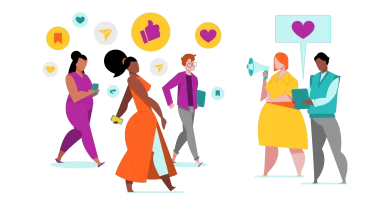Motion tracking & Cybernetics: A Huge Part of Metaverse
The role of Motion tracking and Cybernetics is much more of a deeper connect. With time and evolution, there will be clear demarcations.
If we marry two chains of thought – first, that today everyone has some form of digital identity or an avatar/representation of themselves in a digital form, and second, that we want our disruptions/innovations to have ‘convenience’ as the paramount factor in terms of our social interactions and platforms, shopping and grocery buying experiences, consuming content, and being a part of immigrant communities – the Metaverse has been the long-awaited savior and quintessential trend of the metaverse has enormous future potential because there is a lot of grey area to be discovered with this technology. So far, the long-term implications and potential of Metaverse have only scratched the surface.
There are numerous variables that have been discussed in relation to Metaverse, including the role of 5G, Data and Cloud, Internet of things & connected devices, AR & VR, and so on. However, the role of Motion tracking and Cybernetics has received little attention in relation to Metaverse.
The Metaverse would see a lot of light in the e-sport and gaming industries. According to Gartner, global funding for AR/VR, the foundation of Metaverse, is expected to increase from $12 billion in 2020 to $72.8 billion in 2024, driven by gaming, retail, arts, healthcare, and other high-demand Metaverse-based industries. To provide its users with the best possible gaming experience, gaming heavily relies on various aspects of technology such as motion tracking, AI, AR/VR, and cybernetics.
Motion tracking hasn’t evolved to the point where it can explore the possibilities on a molecular scale, but with the combination of Motion tracking and Metaverse, motion tracking will be a huge factor in future-ready industries. Aside from gaming and esports, motion tracking is widely used in industries such as healthcare, sports, entertainment, automotive, and robotics.
Motion Tracking and Cybernetics
One of the best work-around models in AI, ML, and predictive analysis is cybernetics, which studies the systems/structures, possibilities, and constraints of complex mechanisms such as robotics and creates an auto-pilot mechanism with little to no human intervention. Cybernetics and artificial intelligence (AI) are two different ways of thinking about intelligent systems or systems that can act to achieve a goal.
AI is primarily concerned with teaching computers to mimic intelligent behavior based on stored world representations. Cybernetics is the study of how systems govern themselves and act toward goals based on environmental responses. These systems are not only computational; they also include biological (body temperature regulation), mechanical (engine speed regulation), social (managing a large workforce), and economic (national economy regulation) systems. According to a recent North American military report, the global military AI and cybernetics market are expected to reach $10 billion by 2026, with a 19.3% CAGR. Cybernetics plays an important role in developing military-grade bots, hardware, and related products.
Another excellent example of Cybernetics in action in our daily lives is the Auto-pilot mode in aircraft, as well as connected and autonomous driving vehicles. With the innovations and deployment of high-quality Cybernetics models, the automotive industry has gained a significant competitive advantage.
Metaverse as a concept is relatively new, but it shares many similarities with Cybernetics in terms of their potential to create a 360-degree digital world for its users.
Cybernetics will play a deeper and more subliminal role in the development of the Metaverse ecosystem. Take, for example, the most operational Metaverse input devices, such as headsets, VR sets, Wearables, joysticks, and so on. These would require constant feedback on bug improvement, and Cybernetics is one of the best-placed platforms to course-correct and provides timely updates.
Second, Metaverse is based on the idea of breaking down barriers between human sensory-motor systems and digital objects. Users can seamlessly connect to their digital avatars and have a more immersive experience thanks to predictive analysis and pathways developed by Cybernetics.
While there may be direct variables linked to the development and evolution of the Metaverse such as AR/VR, 5G/6G/Edge Computing, and so on, the role of Motion tracking and Cybernetics is much more of a deeper connection. With time and evolution, there will be clear demarcations.


